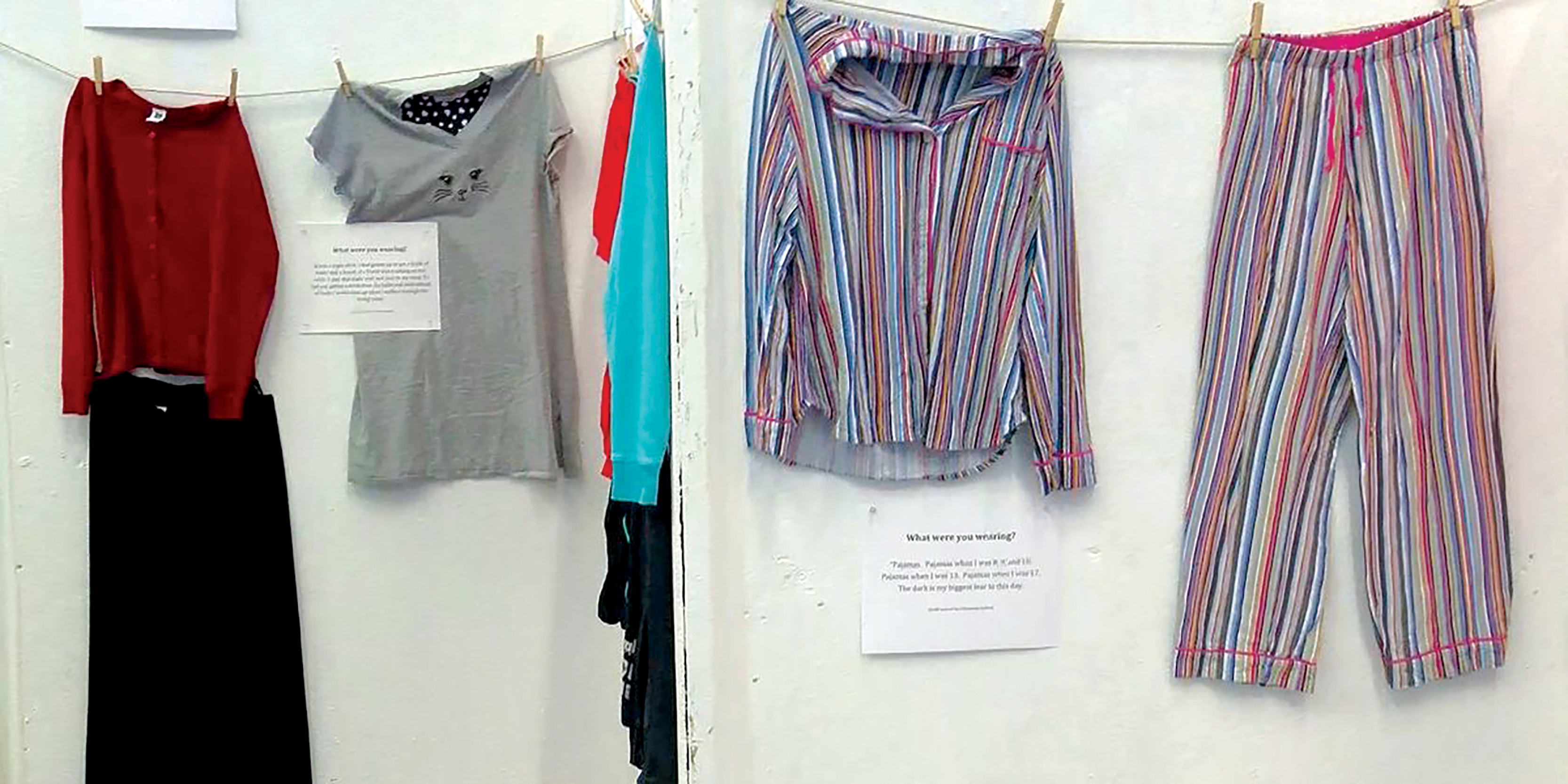Most women are careful to dress in keeping with society’s norms but some do throw caution to the wind and dress to please themselves
In Every report that talks about a girl being sexually violated, there is a sureshot mention of the right clothes the victim could have worn or how the molester thought the girl was not dressed modestly. There are unsaid rules a girl must abide by if she is hoping to not be a target of any sort of sexual violence. The likes of Abu Azmi, Mohan Bhagwat and Asha Mirje have recommended girls to dress humble, out of the many measures women can take to ensure their safety.
From politicians to predators, everyone has a say on what is the right dress code of a quintessential ‘Bharatiya nari’. However, it is after all an issue for the woman to settle –– what she is going to wear for her next trip outside home. Like the comedian Neeti Palta had once said, “Please remember it’s not the clothes that maketh the woman. The only clothes that are rape-proof are clothes without women in them”. In short, there is no particular way a girl must dress to avoid harassment.
To understand this dynamic and how girls go about their daily dress code, Patriot speaks to women who are either studying or working professionals about how they design their wardrobes to fit in the various judgments and suggestions that come their way, and their own comprehension of clothing and security on an everyday basis.
Khyati Singh, who hails from Muzzafarnagar, currently working in an export house in Gurgaon is clear that for her, clothes are not a factor when it comes to sexual wrongdoing. “Yes, most of the time we (girls) think about dressing appropriately before stepping out because of the awkwardness we face,” says Singh, who believes that this discomfort comes from our upbringing in a male-dominated society.

“Sometimes we avoid buying things which should not be worn”, affirms Singh adding a small anecdote about a piece she bought from ONLY few months ago. “While buying this pullover, my friend who was accompanying me suggested to drop it as it was a backless item. Since I liked it a lot, I did buy it but ended up not wearing it as I felt uncomfortable and unsafe in it,” says Singh. She knows that if anything should change, it is the mentality of boys in the male dominated society.
Delhi, stands at the 11th rank in the list of most dangerous cities for women. It is the first metro city in the list, according to a 2012 report by the National Crime Records Bureau. Aastha Kant, a ceramic artist living in the city, believes that Delhi is an unsafe bet for women in comparison to her hometown Dehradun. “I do think about what I am wearing, specially on the streets of Delhi. Short clothes draw unwanted attention all the time.”
According to her, in the society that she is part of, no one is allowed to dress up the way they want. “To me, all descriptions and uniforms, specially in schools are a celebration of the misogynist mindset”, shares Kant. In her experience, no one, including men, is allowed to dress up the way they want. This is where the problem begins.

“Why would they brutally cut girls’ hair in school? I think teachers are more interested in length of skirts and socks then anything else. Uniforms suppress one’s character and it is considered bad and unacceptable to be stylish. Such a strict environment for children, who grow up and feel under-confident about short skirts”, adds Kant who believes that this conditioning starts from a very young age and lasts till a girl starts to believe in these regulations set by the society.
Kant goes on to tell us about how some girls end up considering clothing to be a factor that influences misbehavior towards them from the opposite sex. “Irrespective of the reason of sexual misconduct, a girl may believe that it is indeed her too-short shorts or her super-skinny jeans.”
For some girls, as Priya Kanodia suggests, clothing decisions depend on the mode of transport and the place they are going to visit. “Well, honestly, I do keep a few things in mind before leaving the house. No skin show, if I’m taking public transport or if it’s an open public area like ‘Horn Ok Please’ or ‘Comic Con.’” She adds that she is more confident in terms of clothing in cities like Bangalore and Mumbai where she travels often for work and personal reasons. “These cities are definitely a bit more relaxed, unlike Delhi.”

She aknowledges herself as an impulsive buyer, thus shopping does not get affected by the possible danger some outfits can put her in.
Clothes are a form of self-expression. This kind of expression has its own consequences. As per Nihal Kaur, a student of human rights who recently completed her internship at National Human Rights Comission, it works as a catalyst in cases of misbehavior against women and is not an independent reason. “I can recall statements from movies (unreliable source but they do mirror society), lectures attended on women’s safety and on ideologies, clothing does affect the paradigm in a situation”, sa Kaur who sticks to khadi kurtas and pants on most days.

“There are all kinds of women — some feel empowered in coverage whilst some in nudity. However, irrespective of various popular beliefs, the act of molestation or anything of similar kind, is something which belongs to the doer. The entire onus falls and must always fall on the ‘molester’ here and the ‘molested’ has nothing to do with it. Be it the clothes, be it timing, be it the places or be it the mental condition.”
In a country like India, there comes a lot of baggage with the freedom to dress how a woman wants. Sometimes it is the ‘Indian culture’ that she must adhere to and other times it is her own integrity in question but on most occasions, her dress is an invitation for sexual misconduct. So much so that, even liberal girls think twice about their attire. There have been studies and exhibitions that conclude how a woman’s clothes do not participate in any sexual assault of which she is a victim. It is in fact a false impression created by victim shamers who establish a fatal society.
Aditi Gupta

I actually don’t think it matters to a molester what girls wear or don’t wear, but the clothes become the victim of the blame game that usually ends badly for the ladies. Unfortunately, I do keep this in mind while shopping and dressing up as there isn’t much choice in the matter.
Himanshi Sahni

There’s no clothing that can control the testosterone levels, no checklist to keep the potential molesters away and probably no visible change in mindsets, and women still get judged in whatever they do or wear. I do think about what I wear in terms of me feeling good about it; never in terms of what others might think of it. My decision to buy/wear something may depend on factors like the occasion, my mood, weather, etc — never on what guys will think about it. I’ve been eve-teased in my pyjamas and layers of sweaters anyway. What I wear/buy is a very personal thing, more about my taste and my way of presenting myself. If I (subconsciously) start to think about how potential molesters will take my way of clothing, it’ll leave a constant reminder snoozing in my head. And that’ll be sad.
Rishika Goyal

Women sure are judged for it but that is not something that would stop me from wearing what I want to. But keeping in mind matters of safety, I don’t want to stand out and be stared at either. For example, I would be careful about what I wear to Chandni Chowk. But the way you dress has nothing to do with those bastards. Girls wearing burqas have also been raped. Like I said, what you wear has nothing to do with it. It’s no invitation. Many a times I’ve seen men look at my legs and I’ve either stared back or asked them what they are looking at. They don’t stop me. It’s messed up. But I’m hopeful that things will get better.





